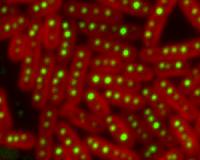| . |  |
. |
Waltham, MA (SPX) Mar 24, 2010 Whenever you choke on acrid cigarette smoke, feel like you're burning up from a mouthful of wasabi-laced sushi, or cry while cutting raw onions and garlic, your response is being triggered by a primordial chemical sensor conserved across some 500 million years of animal evolution, report Brandeis University scientists in a study in Nature this week. Chemical nociception, the detection of tissue-damaging pungent chemicals like those found in wasabi, tear gas and cigarette smoke, is triggered by a protein receptor known as TRPA1, which is found throughout the human body in the nose, mouth, skin, lungs, and GI tract. Studying the chemical sensors of Drosophila fruit flies, scientists discovered that flies use their ortholog of the human TRPA1 sensor for the same purpose. Using a combination of behavior, physiology and phylogenetics, the scientists discovered that this defensive response to noxious compounds is an evolutionary stalwart cutting across immense time scales and linking humans, insects and many other animals back to their common ancestor over 500 million years ago, said lead author and biologist Paul Garrity. The ability to detect such noxious compounds, known as reactive electrophiles, is important for animal survival, prompting them to avoid potentially toxic food or dangerous situations. These receptors give animals a leg-up in survival by acting as a biological warning system, as it were. In humans, chemical nociception causes pain and inflammation. "What the study, spearheaded by Kyeongjin Kang in my lab, shows, is that this chemical sense is nearly as ancient as vision," said Garrity. "While many aspects of other chemical senses like taste and smell have been independently invented multiple times over the course of animal evolution, the chemical sense that detects these reactive compounds is different. It uses a detector we have inherited in largely unaltered form from an organism that lived a half-billion years ago, an organism that is not only our ancestor, but the ancestor of every vertebrate and invertebrate alive today." Working with biochemist Doug Theobald, the team reconstructed TRPA1's family tree back some 700 million years using a variety of bioinformatic methods. "We discovered that a new branch split off the tree at least 500 million years ago, and that this new branch, the TRPA1 branch, appeared to have had all the features needed for chemical sensing even back then," said Garrity. "Since that time, it appears that most animals, including humans, have maintained this same ancient system for detecting reactive chemicals." And therein lies some of the future promise of harnessing TRPA1. Because the receptor is so widely dispersed throughout the animal kingdom, it holds promise both as a target for therapeutics and deterrents. Understanding more about how the receptor works may help lead to important applications in medicine and industry. "One of the great things about studying TRPA1 is that basic science knowledge, of the kind you get working with fruit flies, can be applied in so many different ways. By learning more about how TRPA1 works, scientists can come up with new ways to turn the receptor off in humans to treat pain and inflammation. And they can also come up with new ways to turn the receptor on in pests like malaria-carrying mosquitoes and aphids to deter them from transmitting disease and destroying crops." said Garrity. The other authors of the paper are Kyeongjin Kang, Stefan R. Pulver, now at the University of Cambridge, Vincent C. Panzano, Elaine C. Chang, Leslie C. Griffith, and Douglas L. Theobald.
Share This Article With Planet Earth
Related Links Brandeis University Darwin Today At TerraDaily.com
 Bacteria Divide Like Clockwork
Bacteria Divide Like ClockworkCambridge, MA (SPX) Mar 24, 2010 A team of researchers at MIT and the University of California at San Diego has shown how cell division in a type of bacteria known as cyanobacteria is controlled by the same kind of circadian rhythms that govern human sleep patterns. Previous studies have shown that even though cyanobacteria do not "sleep" in the same way that humans do, they cycle through active and resting periods on a 2 ... read more |
|
| The content herein, unless otherwise known to be public domain, are Copyright 1995-2010 - SpaceDaily. AFP and UPI Wire Stories are copyright Agence France-Presse and United Press International. ESA Portal Reports are copyright European Space Agency. All NASA sourced material is public domain. Additional copyrights may apply in whole or part to other bona fide parties. Advertising does not imply endorsement,agreement or approval of any opinions, statements or information provided by SpaceDaily on any Web page published or hosted by SpaceDaily. Privacy Statement |